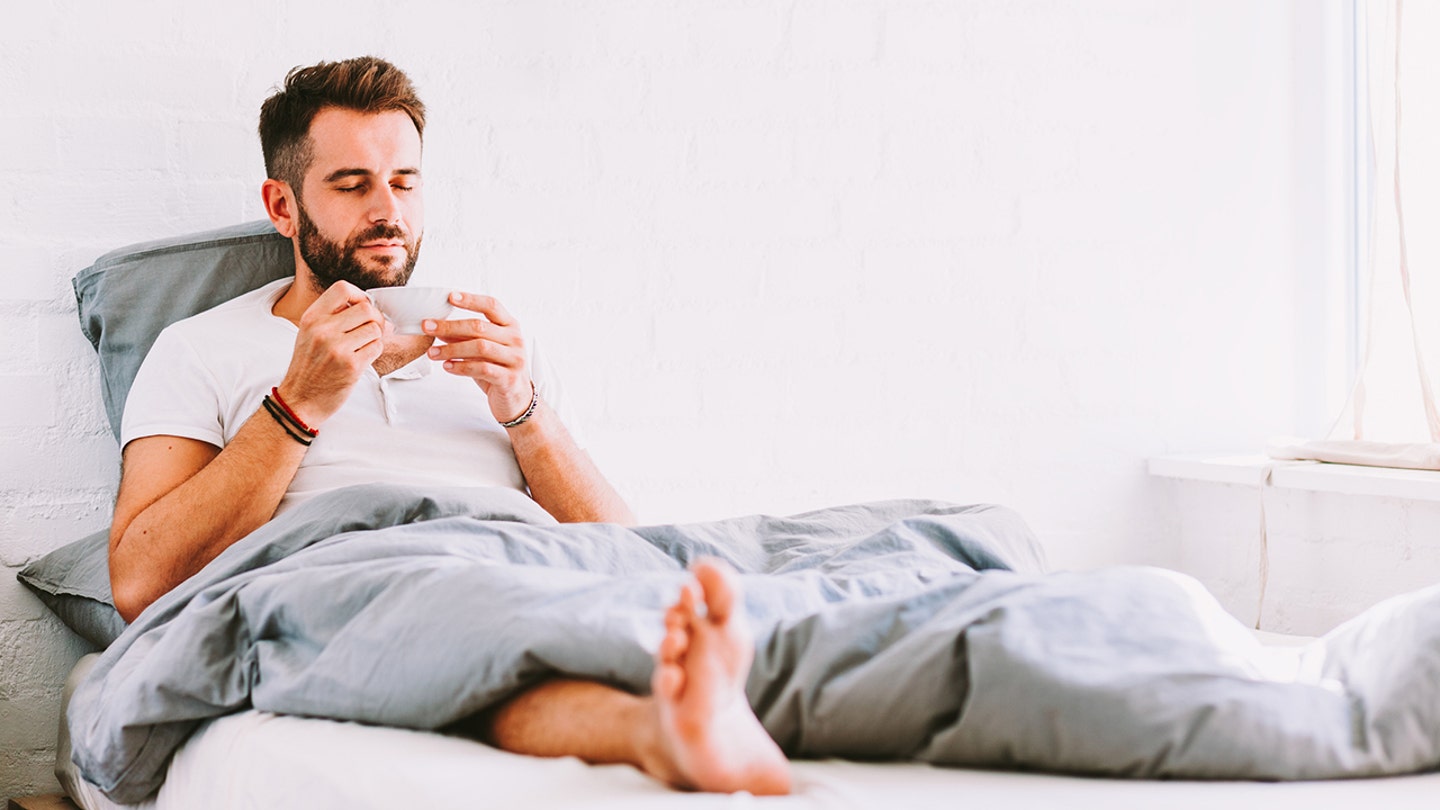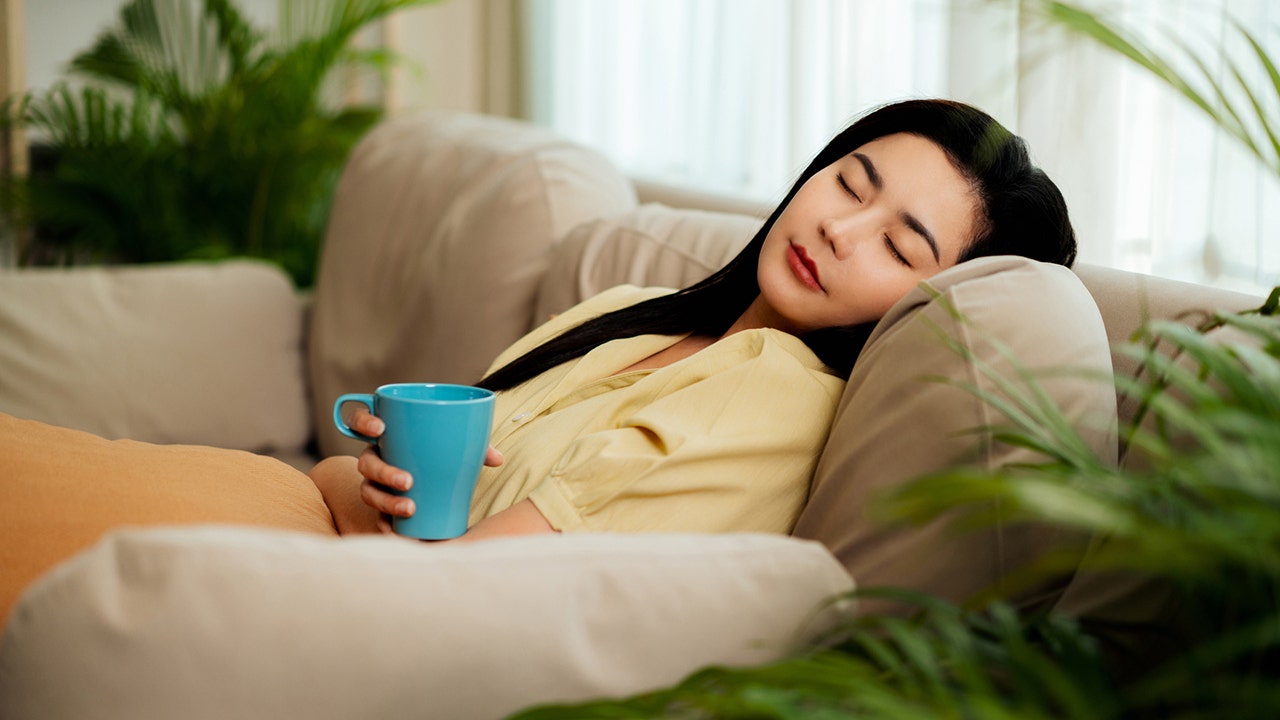Caffeine and sleep may seem like polar opposites — but there may be a benefit to combining them.
The “napuccino” has become a popular method to optimize sleep and wake up with more energy by drinking a caffeinated beverage before lying down for a nap.
In a recent episode of the podcast “The Diary of a CEO” with Steven Bartlett, sleep expert Dr. Cheri Mah in Redwood City, California, introduced the napuccino as a “useful tool if you’re trying to have a temperate boost in alertness and performance.”
RARE SLEEP DISORDER CAUSES PEOPLE TO COOK AND EAT FOOD WHILE THEY’RE ASLEEP
A napuccino requires drinking a caffeinated beverage of choice before taking a 20- to 30-minute power nap, according to Mah.
The caffeine will begin to kick in 15 minutes after consuming it.
A napuccino involves drinking caffeine before a nap with the goal of waking up more energized. (iStock)
“If you’re able to fall asleep within five to 10 minutes while the caffeine will start to come on board, then when you wake up after 20 to 30 minutes … the caffeine will have kicked in,” she said.
GOING TO BED AFTER THIS TIME COULD LEAD TO POORER MENTAL HEALTH, A STANFORD STUDY FINDS
Research has shown that the energy from both the caffeine and the power nap is “more effective for alertness and performance improvement for a couple of hours,” compared to only drinking caffeine or napping alone, Mah said.
Fox News Digital reached out to Mah for further comment.
“By the time you get up from the nap (20 to 30 minutes), the caffeine is kicking in.”
Clinical psychologist Kelly Baron, PhD, director of the behavioral sleep medicine lab at the University of Utah, described the napuccino as a “really great and scientifically tested technique.”
CLICK HERE TO SIGN UP FOR OUR HEALTH NEWSLETTER
“Having some caffeine, plus a short nap, is better than either one of those alone,” she told Fox News Digital.
“By the time you get up from the nap (20 to 30 minutes), the caffeine is kicking in.”

A sleep expert confirmed that having some caffeine, plus a short nap, is “better than either one of those alone.” (iStock)
This method has been tested with certain activities, such as driving performance and shift work, Baron noted.
“Short naps with or without caffeine are proven techniques to boost performance for those experiencing sleepiness,” she said.
FEELING HUNGRIER THAN USUAL? YOUR SLEEP SCHEDULE COULD BE THE CULPRIT, AN EXPERT SAYS
Getting the standard seven to nine hours of sleep per night is ideal, the expert said, but that can be challenging for some people.

“Drinking coffee with a lot of added sugar or high-calorie creamers can offset some of the potential health benefits,” one expert warned. (iStock)
Los Angeles-based registered dietitian and nutritionist Ilana Muhlstein agreed that the napuccino can be a “great strategy to boost alertness,” but also noted it’s important to consider how people prepare their coffee.
“Drinking coffee with a lot of added sugar or high-calorie creamers can offset some of the potential health benefits,” she said.
CLICK HERE TO GET THE FOX NEWS APP
“Consuming too much sugar can lead to energy spikes and crashes, which might counteract the energizing effect of the nap and caffeine.”
Muhlstein suggested drinking black coffee, or with a splash of regular or plant-based milk, zero-calorie sweetener like Stevia, or monk fruit.

For those who want to try the “napuccino,” drinking black coffee — or coffee with a splash of regular or plant-based milk, zero-calorie sweetener or monk fruit — is advisable, said one dietitian and nutritionist. (iStock)
“This way, you’re reaping the benefits of the napuccino without the drawbacks of excess sugar or calories,” she said.
Up to 400 milligrams of daily caffeine is deemed safe for most healthy adults, according to Mayo Clinic.
For more Health articles, visit foxnews.com/health
Heavy caffeine use can cause side effects for some. Anyone with concerns should speak with a health care provider.

